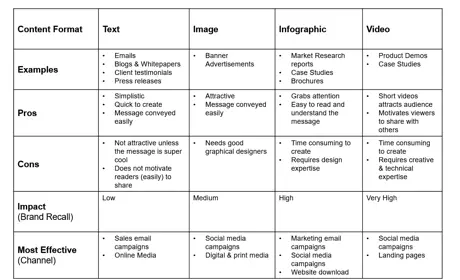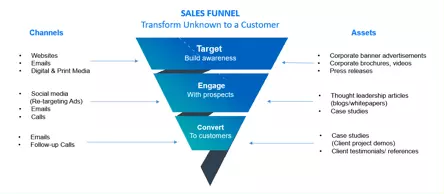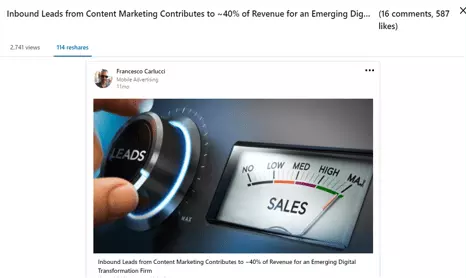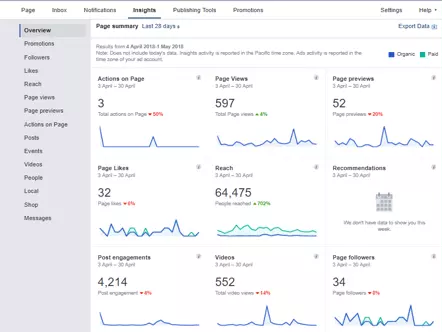“Content is King” - An old, but powerful statement made by Bill Gates in 1995 still holds good in the lives of marketers. Internet is all about content and social media is all about how we distribute the content to promote it.
The demand for content generation has continuously grown. What has evolved is the way we represent the content and how we distribute it? From text, images, infographics…and more recently you would’ve noticed that videos of all sizes and styles have gained popularity.
The question which comes to every marketer’s mind is that, which content format is best to build company’s brand, and to generate leads for the sales team (eventually contributing to company’s revenue)?
In this article, I’d like to talk about my experience on which content works and at what stages of the sales funnel.
Let’s begin with the variety of assets which are required by the organization to drive sales – case studies, brochures, blogs, whitepapers, presentations, market research reports, press releases, client testimonials etc. And, the four primary types of asset representations – video, infographic, image and text.
Key Matrix – Examples, Pros, Cons, Impact and Usefulness
Multiple formats and several requirements - Each representation has challenges and benefits. This analysis should help you figure out which one will be useful for you based on your situation.

Stages of the Sales Funnel – Which Marketing Asset is Most Effective?
Every marketing asset has its place in the sales funnel, it’s just that some of them are more impactful when used at the right stage in the sales cycle. In addition, the different lead generation approaches – outbound and inbound marketing use these marketing assets throughout the sales process.

Measuring the Performance of your Asset
How do you find out if your content is doing well? - There are several parameters and tools available to measure the performance of your assets. The most common parameters are:
- Click – through Rate (CTR) – The number of hits/clicks on the url of the post, you have published on social media or website.
- Impressions or Views – The number of views for the particular post/ advertisement published on social media.
- Shares – The number of people who have shared your post.
- Comments & Engagement – The number of people who have (positive) commented on your post.
- Downloads – The number of marketing qualified leads (MQLs) and sales qualified leads (SQLs) captured during collaterals download from the websites (where it’s hosted).
Clearly, higher the clicks, views, shares and downloads, the chances of conversions are better. The above mentioned are all good to have parameters. However, the best rated asset and top performers are the ones which drives the marketing qualified lead to a customer win (which in most scenarios are the case studies).
Most of the social media tools (LinkedIn, Twitter, Facebook, Slide share, Instagram etc.) come with in-built analytics. You can also integrate popular tools like Google Analytics, Google Webmaster, SEM Rush and Adobe Omniture to measure the success. This gives you an idea on which ones are working for you, and where to make the course corrections.
Example 1: LinkedIn blog post

Example 2: Facebook Page Insights

Conclusion
All said, ‘you’ as the marketer are the best judge to make the final decision on what works best for your organization. Most times, it’s the combination. For example, a case study presentation followed by a product demo video can get you to closure sooner than a corporate brochure followed by a detailed sales presentation.
It also depends on the resources and the expertise you have to create the content, how you leverage it across distribution channels, what time of the day you post it, how you have been nurturing your leads, above all, the right message you are able to convey to the prospect at the right time!
So, what content works for you? It will be interesting to know your thoughts. Feel free to share your insights in the comments box below.
Disclaimer: This article is purely based on the author’s (Kavyanidhi Narayan) experience in Marketing. At present, Kavya is the marketing director at RapidValue and leads a team of marketing professionals responsible for all aspects of Marketing.







Leave your comments
Post comment as a guest